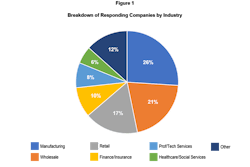
First impressions - they make all the difference, especially for first-time customers. From your online store to the last mile, e-commerce sellers must be sure that their customers are experiencing only smooth sailing if they expect them to come back and make further purchases in the future.
Of course, retail industry giants, such as Amazon, already have a fully established process that effectively helps them meet ever-changing customer demands and expectations - and, luckily for them, they have the resources to accomplish so. But, when it comes to smaller e-commerce sellers this job becomes a little harder.
And, to make matters worse, customer demands call for equal delivery services from all e-commerce sites -regardless of size-, thereby, making customers very unforgiving when things go wrong.
To combat this, it’s crucial that smaller e-commerce sellers take a step back and determine what exactly it is that their customers want, and how they can deliver on it. And, to do this, they need customer analytics.
So, let’s take a look at why customer analytics truly matters for e-commerce.
Flexible Delivery Options
As e-commerce continues to grow, the ‘last mile problem’ remains a prominent issue for most e-commerce companies. And, with the most recent increase in customer expectations and demands, the last leg of delivery has become ever more challenging.
Thanks to the Amazon Effect, consumers seek faster and more convenient delivery services, putting pressure on smaller businesses to compete. Today, 84% of shoppers won’t repurchase from a brand that fails to meet delivery windows. Now, for giants such as Amazon, meeting all orders is easier, due to their extensive resources - and development of new delivery methods such as drones, and autonomous vehicles. However, smaller businesses don’t have this luxury, and so, must turn to reliable delivery management tools for help.
It’s important to note, that when it comes to delivery one size does not fit all. Some customers may be willing to pay more to receive their goods faster, while others may not. So, to ensure you’re satisfying all customers turning to customer analytics is key. Knowing exactly when, where, and how your customers want their goods delivered will help you in pooling your resources together and spending them on the tools that will get the job done for your business.
Leverage Customer Feedback
Advanced analytics can help companies better understand their customers and the environment that they are in. This is particularly important when dealing with a large and fragmented customer base - as most logistics companies do.
By investing in tools or providing your customers with the platform to provide feedback, you can gain substantial business value and customer insights that may have otherwise remained hidden. Insights such as these, can be the make or break for your relationship with a customer. If a customer is unhappy, and they provide you with all their reasons, these insights can then be leveraged to make a change - and ensure no future or even current customers suffer the same disappointment.
At the end of the day, your business serves the customers, and there’s no better way to find out what you’re doing wrong, or right, than from the source themselves - the customers.
Improve Delivery Performance
As time has gone on, the last mile has proven to be the most challenging part of the logistics pipeline, and naturally, the most important. With the influx of orders, accomplishing all deliveries at the expected time is becoming more and more difficult for smaller companies.
Analytics provide cutting edge insights that can be applied to the supply chain to optimize all logistics processes - especially the last mile. From route options, to fuel efficiency these insights facilitate operational improvements while creating more personalized experiences for the customers.
Therefore, when debating how to structure, develop, and deploy all your resources and capabilities, turning to customer analytics is the key to success and improving delivery performances.
Conclusion
When it comes to the last mile, the main challenges include minimizing costs, increasing efficiency, and securing an overall friction free delivery system.
And to do so, it requires creating ultimate customer transparency. Customer analytics provides companies with the stepping stone needed to gain full transparency into their customer’s wishes. Armed with these insights, companies are able to make the right decisions that make use of their resources, time, and extensive efforts. Making customer analytics a truly critical part of the last mile.
















